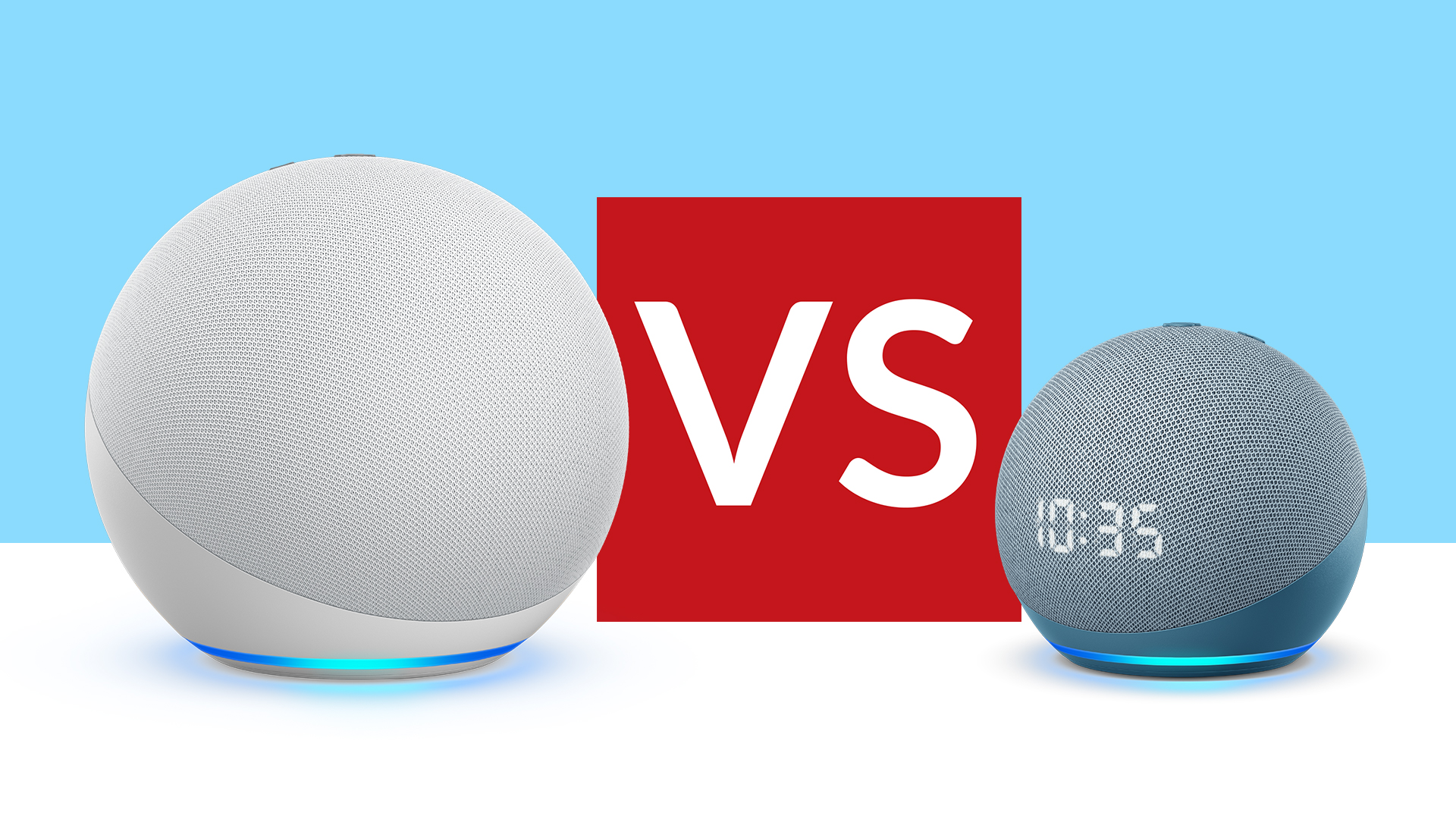
Amazon has given the Echo (4th gen) and Echo Dot (4th gen) their biggest redesigns ever in the new version (along with getting rid of the Echo Plus in the process), but which of these new Alexa speakers is the right one for you? Is the £40/$40 premium really worth it for the larger full-on Echo, or will the Dot do just fine?
The choice isn't exactly clear cut. Although there are a whole lot of similarities between the two new models, there's a laundry list of differences too. Let's check them out and pick them apart.
- See the best Amazon Echo deals in one place
- Want even better sound? Here's our Amazon Echo Studio review
- Here are the best smart speakers of all kinds
- Read our Google Nest Audio review – the Echo's rival
Amazon Echo (4th gen) vs Echo Dot (4th gen): Price & release date
The new Amazon Echo comes in at $99.99/£89.99/AU$149, which pretty much par for the course when it comes to mid-range smart speakers. It has stronger speakers than its predecessor, and includes smart home hub connectivity that was previously exclusive to the more-expensive Echo Plus, so it's a step up in the value, even if the price is the same.
The Echo is available to order now, but officially releases on October 22nd 2020.
The Echo Dot (4th-gen) is, as before, the cheaper option, starting from $49.99/£49.99/AU$79. You can get the Echo Dot with Clock instead for $59.99/£59.99/AU$99, or the Echo Dot Kids for $59.99/£59.99/AU$99.
Again, the Echo Dot models are available to pre-order now, for release on October 22nd.

Pictured: Amazon Echo Dot (4th Generation)
Amazon Echo (4th gen) vs Echo Dot (4th gen): Design
No prizes for guessing that the cheaper Dot is the smaller of the two, and while its 100x100x89mm dimensions might not seem much less than the 144x144x133mm of the big boy Echo on paper, in practice it's a lot dinkier. The new Dot is basically the same circular width as the third-gen Echo Dot, so the footprint on your desk/sidebord/etc is about the same, but it's far taller, so it's less subtle.
Sign up to the T3 newsletter for smarter living straight to your inbox
Get all the latest news, reviews, deals and buying guides on gorgeous tech, home and active products from the T3 experts
The Echo Dot is not quite as bulbous as the fourth-gen Echo, on the other hand, which is basically as wide as its cylindrical predecessor was tall. We wouldn't call either unit unattractive, but you're out of luck if you want to make them inconspicuous. They're positively space-age.
The Echo Dot remains the only device of the pair which offers (for £10/$10 more) a digital clock built in, making it great for a bedside table. It's also the only size which gets a Kids Edition, with a fancy animal-face cover and extra privacy features, though both standard versions can now detect when a child is talking and give them appropriate responses.
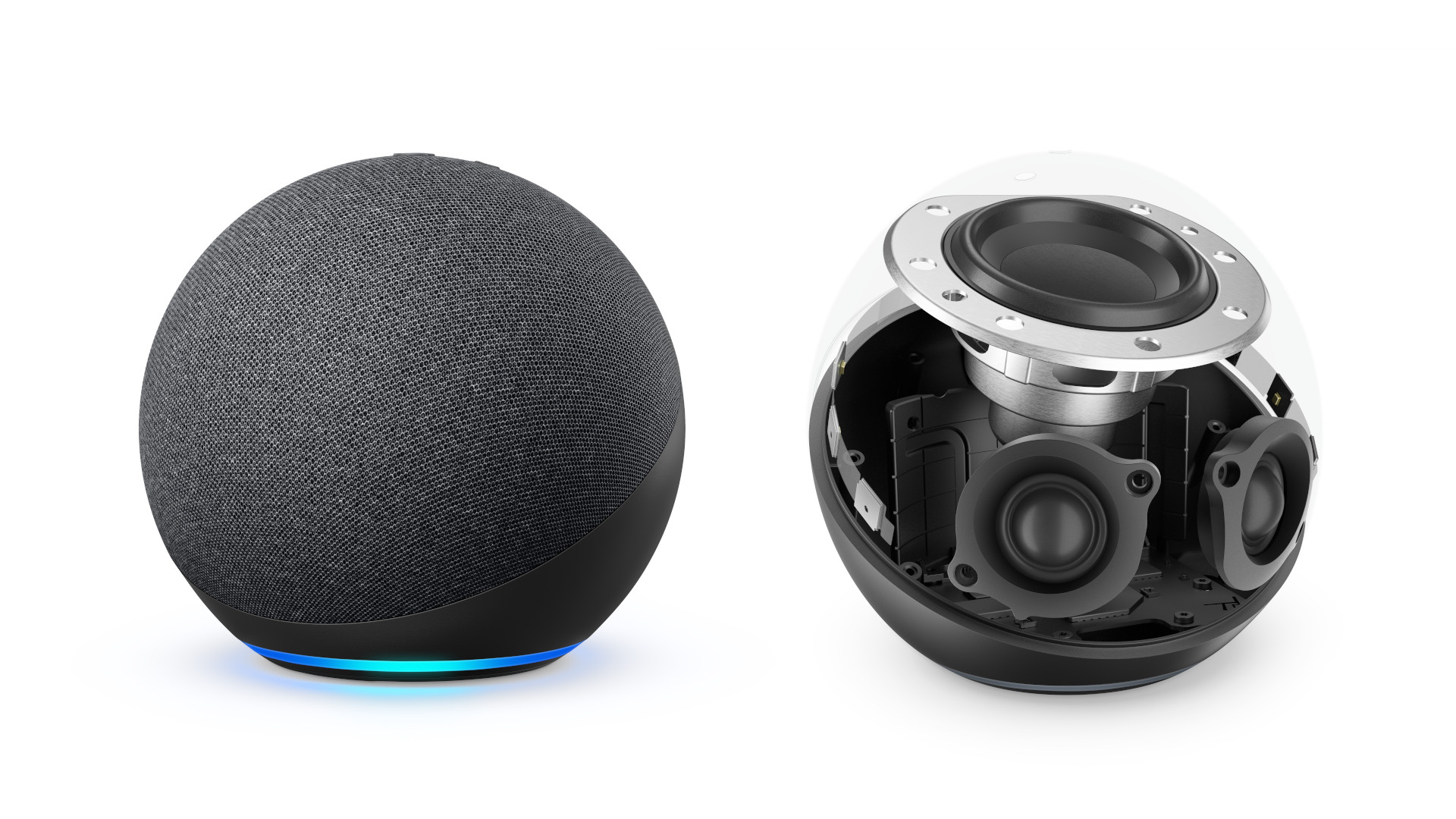
Pictured: Amazon Echo (4th Generation)
Amazon Echo (4th gen) vs Echo Dot (4th gen): Audio
Amazon has designed both new Echoes with an actual back, bucking the current trend by making both of these speakers front-firing rather than a room-filling 360 degrees. That directional sound means they're best placed near walls, which is (let's face it) where previous Echo devices tended to live despite their more all-around sound.
The Amazon Echo's larger size is partly a result of its generous speaker package, which consists of a three-inch woofer and a pair of 0.8-inch tweeters.
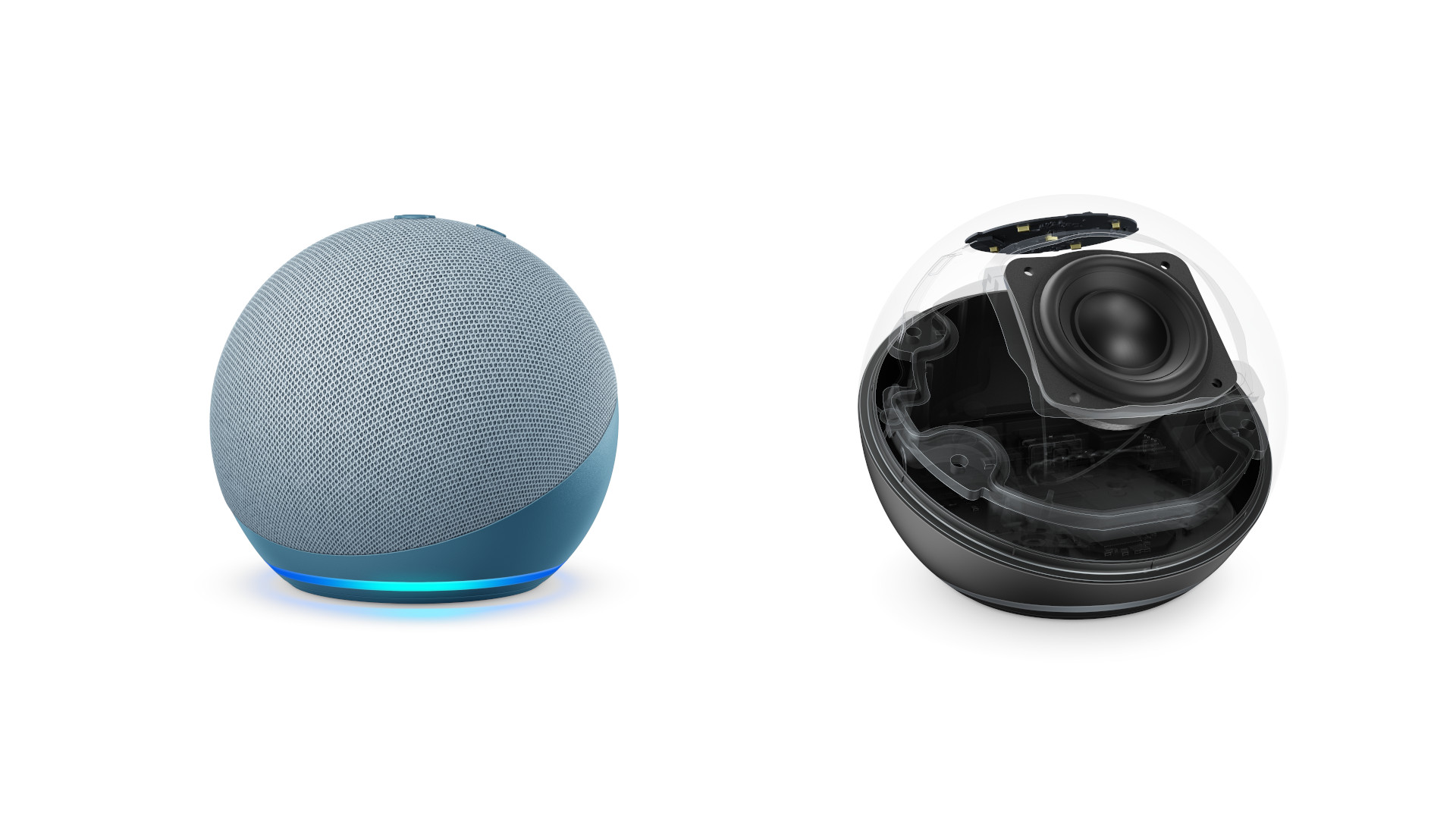
Pictured: Amazon Echo Dot (4th Generation)
The Echo Dot gets a smaller 1.6-inch speaker, and (unsurprisingly) a far more limited audio range. That's not to say it'll be useless for listening, as anyone who's rocked out in their kitchen to a previous Echo Dot will attest to, but the more expensive option will certainly give you a richer experience.
The Echo will also give you access to Dolby-enriched audio streams, which the Dot can't manage, though Atmos and 3D audio remain reserved for the high-end Echo Studio.
Amazon has not yet made clear to us whether multiples of these devices will be usable as a stereo pair, but we'd be surprised if that feature wasn't available.
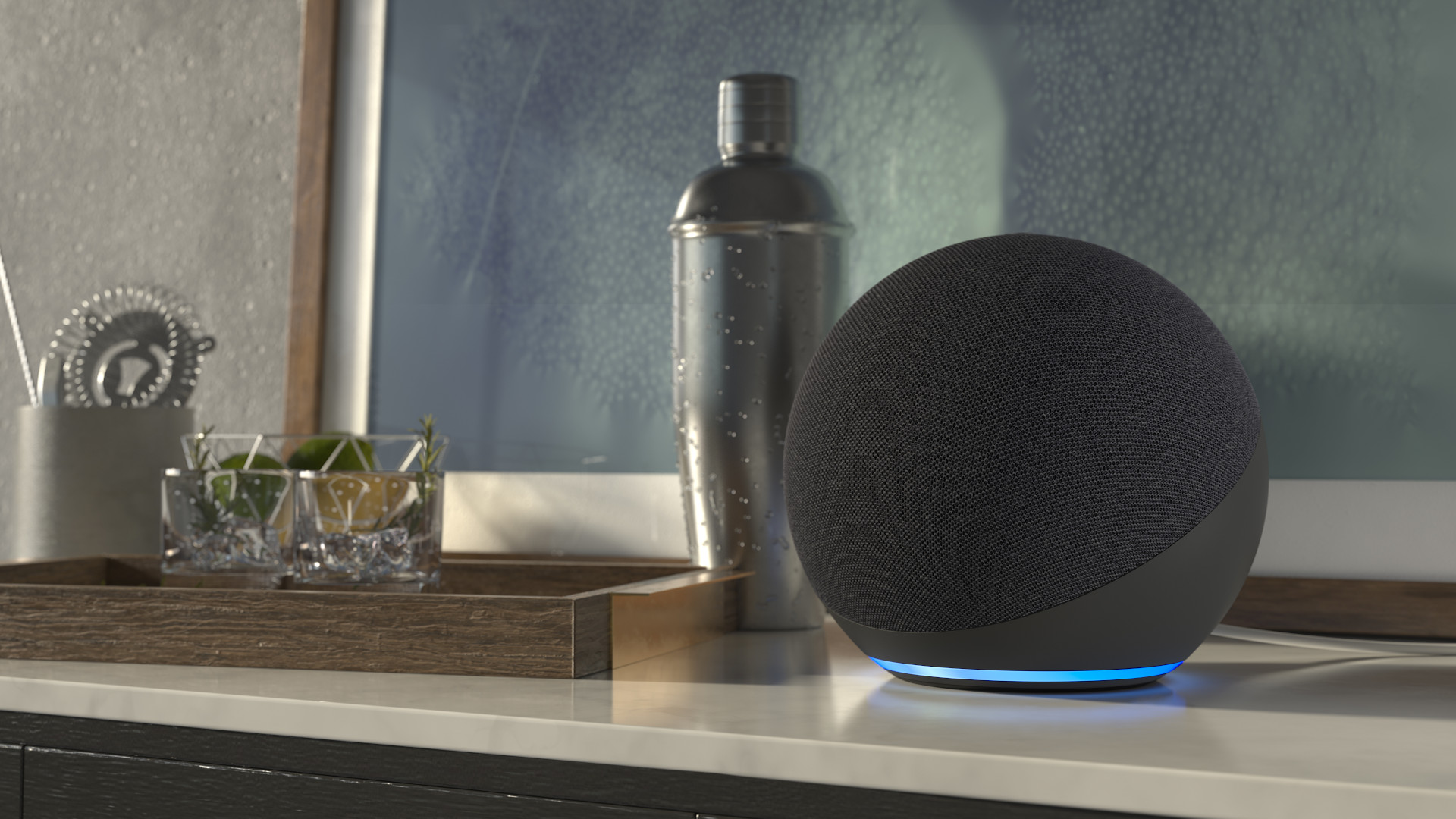
Pictured: Amazon Echo (4th Generation)
Amazon Echo (4th gen) vs Amazon Echo Dot (4th gen): Smart features
Alexa as an ecosystem gives you a lot of control over a lot of smart devices; there are far more Alexa-compatible smart gadgets than there are for any other platform, even Google Assistant. But even though the 4th-gen Echo Dot gives you the requisite voice control, and those compatible devices will appear in your Alexa app, the full-sized Echo is the only one of this pair that includes an integrated wireless control hub.
You likely have one of two feelings when faced with a Zigbee hub. You're either highly excited by the possibilities it presents for smart home shenanigans, or you're thoroughly non-plussed by it.
Even if you're in the latter camp, bear in mind that a whole lot of popular hardware runs on Zigbee already – Philips Hue lights, to name the most prominent – and a central hub like the Echo's means you can save yourself a few cables and power sockets by doing away with bespoke hubs like the Hue Bridge.
The main Echo can also directly control Bluetooth Low Energy Mesh devices, which is a string it its bow that'll become more useful as time goes on and the technology evolves.
The main Echo also includes support for Amazon's Sidewalk long-range wireless system, which doesn't do much yet, but will become a kind of blanket network that small devices can use to communicate back to you as long as they're within a few miles of an Amazon Echo somewhere.
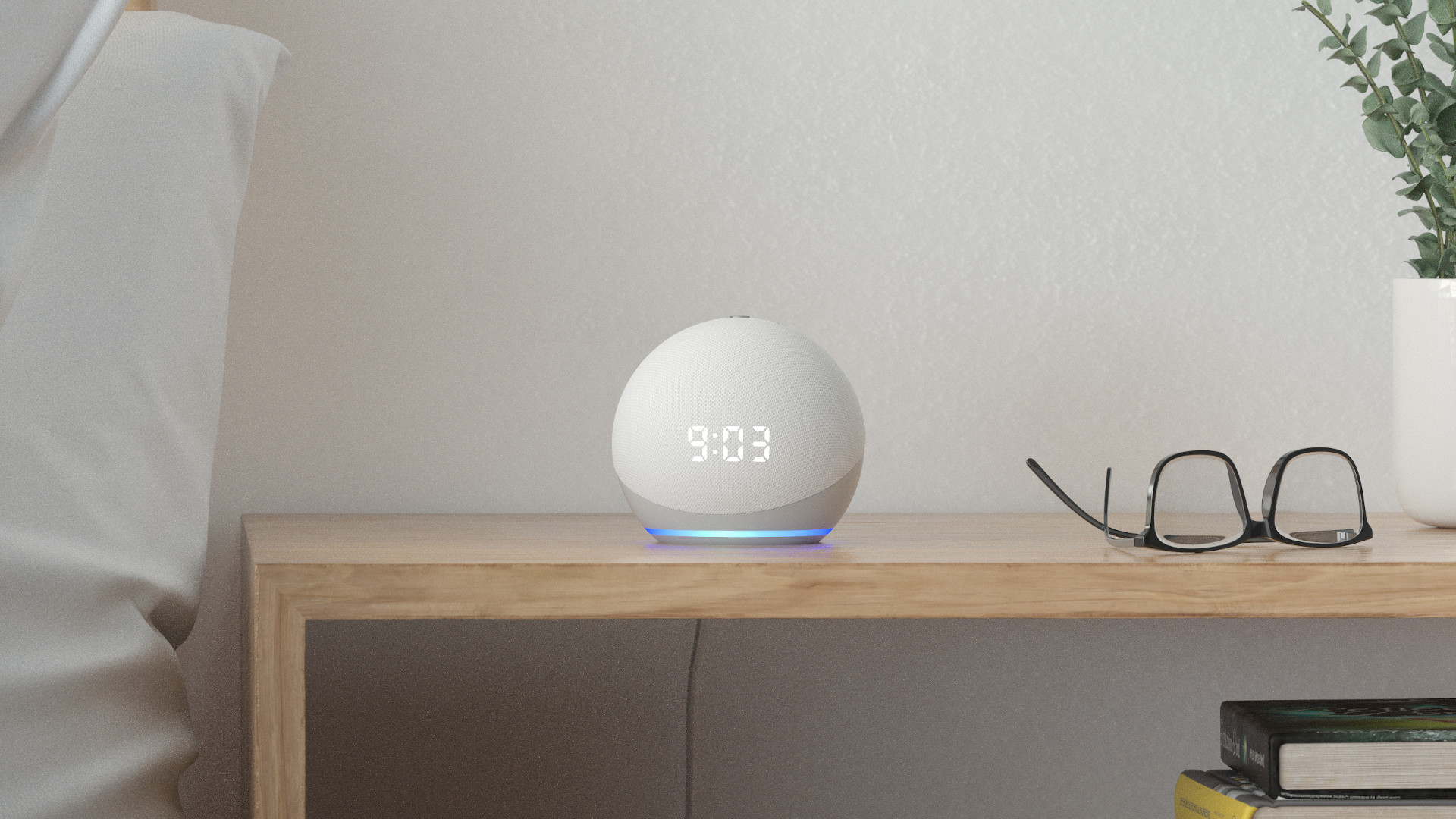
Pictured: Amazon Echo Dot with Clock (4th Generation)
Amazon Echo (4th gen) vs Amazon Echo Dot (4th gen): Processing
Both the Echo and Echo Dot benefit from Amazon's new AZ1 Neural Edge processor. This chip is powerful enough to interpret common voice commands on board the device itself (particularly ones you'll trigger a lot, such as asking to turn the lights on and off), in many cases vastly reducing the round-trip time of sending your query to the cloud, although it is only launching with US English support to begin with.
Or, at least, that's the theory. Both the Echo and Echo Dot have been granted the the processor, and each is granted a good lick of speed over the previous generation because of it, but only the Echo has enough RAM inside to actually perform speech processing on-board. The Echo Dot takes the more traditional route of online speech processing, which introduces a momentary delay.
Is this a deal breaker? No. Not at all. It's not as if the AZ1 (yet) offers either device the ability to run offline, and while the difference in response times between the two systems will be noticeable, the Dot is not sluggish.
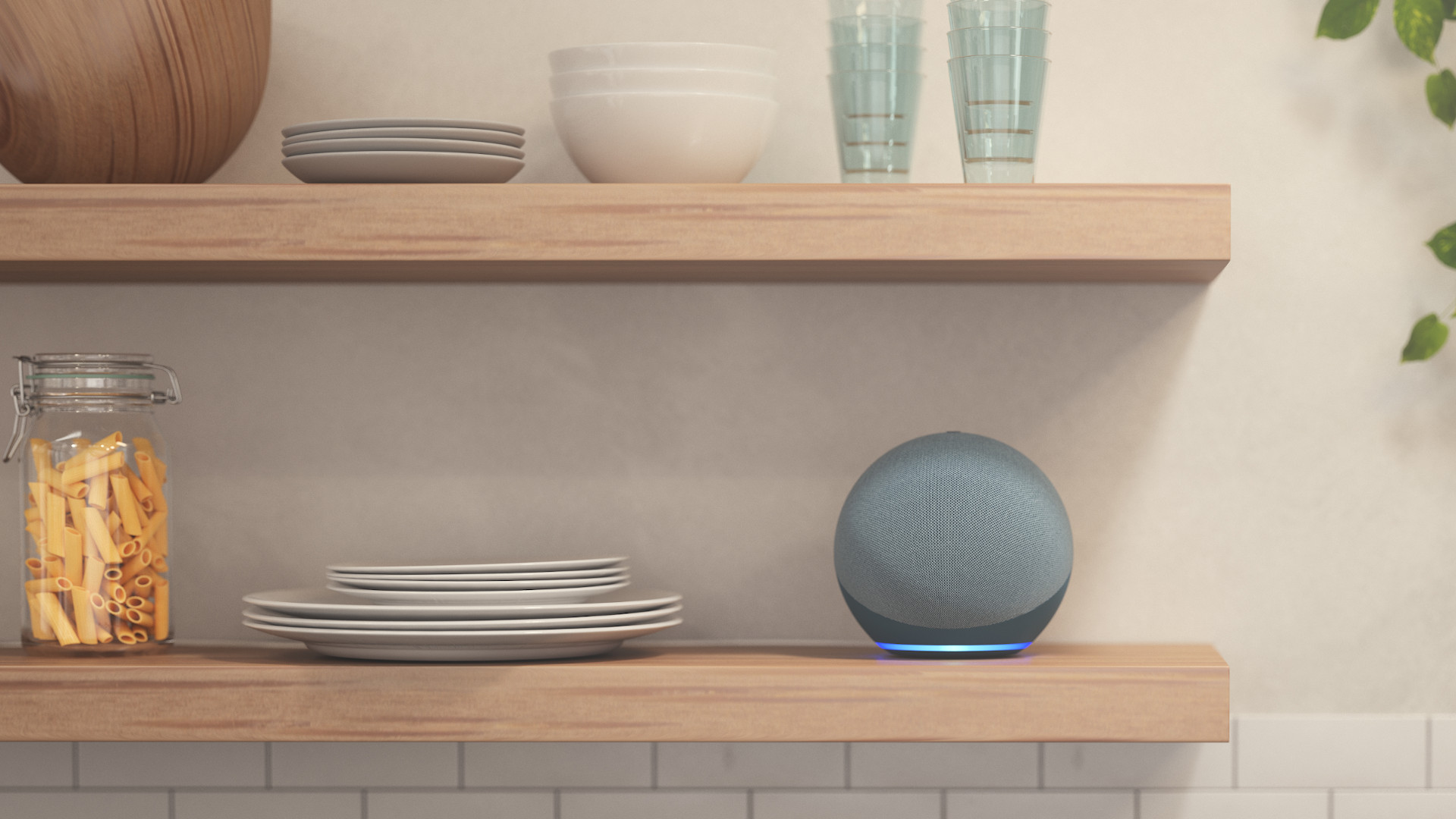
Pictured: Amazon Echo (4th Generation)
Amazon Echo (4th gen) vs Amazon Echo Dot (4th gen): The Verdict
The Amazon Echo and Amazon Echo Dot are both worthy purchases. They slip into the exact same niches the previous generations of the Echo line defined: the Echo for those rooms where you want solid sound, the Dot for those where you want Alexa access with only adequate audio.
If the smart home hub appeals, bear in mind that you'll only need one Amazon Echo in your home to make it happen; the rest can be Dots, if that's more your style.
T3 magazine's own Gadget Guru is a 25-year veteran of the tech writing wars, and has the scars to prove it. He's written for the UK's biggest technology publications, and knows everything from smart doorbell voltage needs to how to bend Windows to his every whim.
-
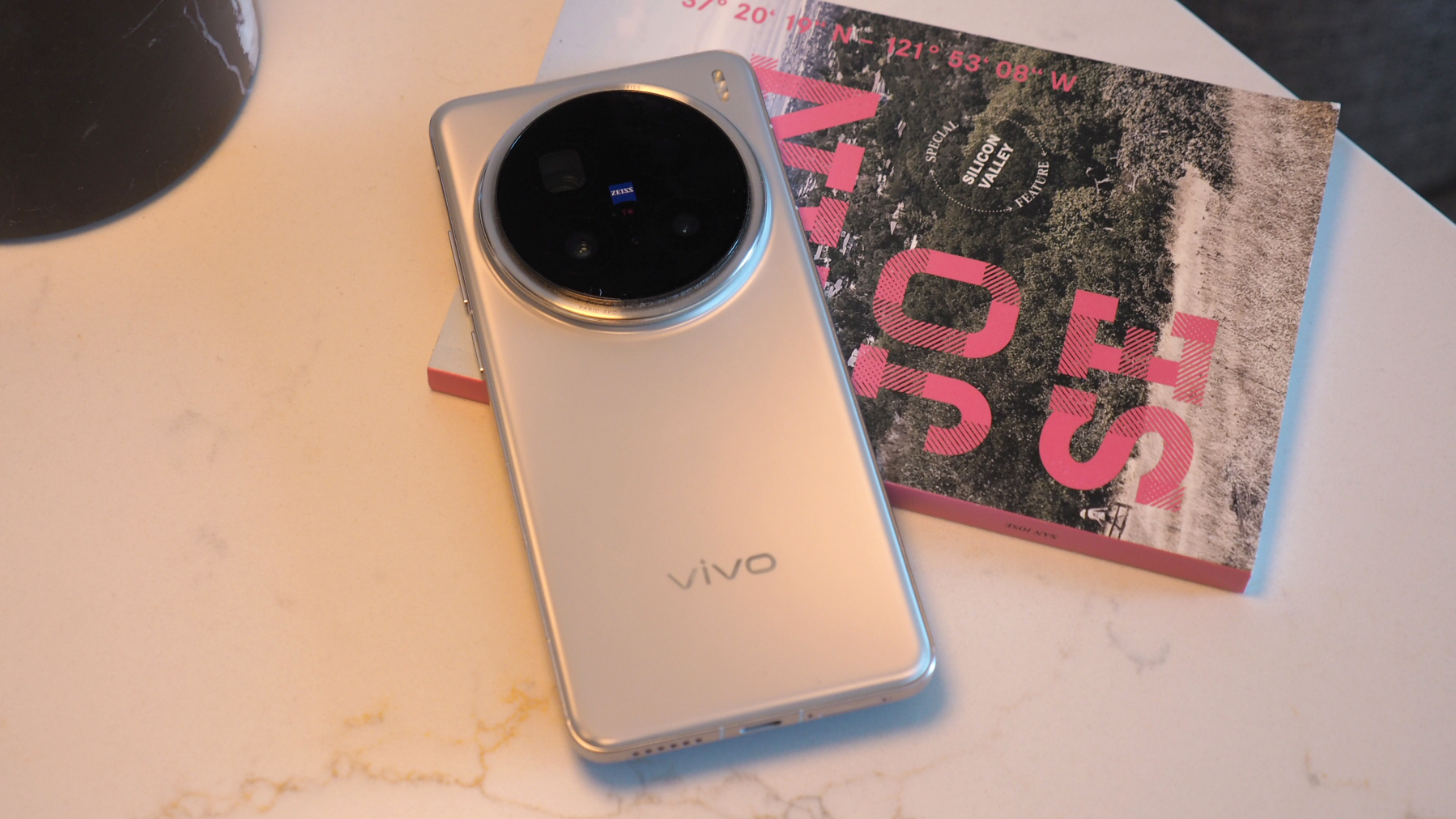 Android phones just got surprise prospective upgrade from MediaTek
Android phones just got surprise prospective upgrade from MediaTekDimensity 9400+ anyone? MediaTek's powerhouse chip just ranked up
By Mike Lowe Published
-
 This Disney Plus favourite had 100% on Rotten Tomatoes last season – here's when the new one is out
This Disney Plus favourite had 100% on Rotten Tomatoes last season – here's when the new one is outIt's an Emmy award-winning show
By Sam Cross Published
